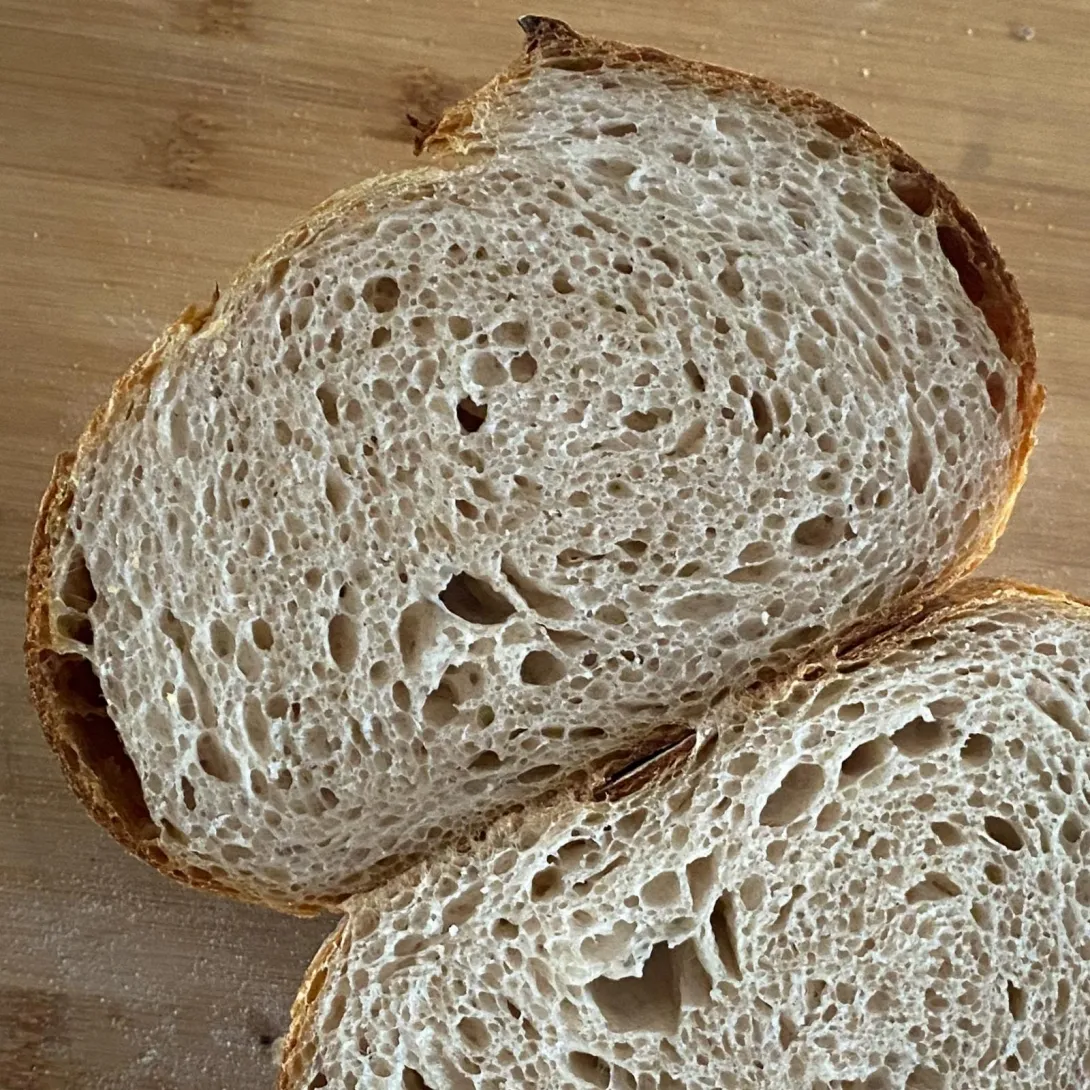
Making a tradition sourdough sometimes can be painful to our arms, So I made a video to show you how to make a Sourdough using a stand mixer. Link Below
Thank you and enjoy!
- Carlo_Panadero's Blog
- Log in or register to post comments

Making a tradition sourdough sometimes can be painful to our arms, So I made a video to show you how to make a Sourdough using a stand mixer. Link Below
Thank you and enjoy!
Well done JC! That's a great looking loaf and crumb.
Up until about two years ago I didn't use a mixer. Somehow I didn't feel I was being authentic to tradition. And then I followed a process that's almost identical to yours. And I was sold and realized I should have used a mixer sooner.
Looks great! Thanks for sharing!
Thank you! I found it easier using a little bit of technology, soon I will be feeling those pain more in my arms and I just started this sourdough journey just couple of months before covid starts, Journey is amazing none stop learning! I bet this is what I'll be doing on retirement.
JC, your crumb is absolutely gorgeous in every way! Are you able to bake this type of lacy, open and uniform cell structure on a consistent basis?
If so, please elaborate. In your mind, what is the important steps to obtain this beauty?
I noticed that you have studies Kristen of Full Proof Baking, but she is not know to produce this type of crumb. I assume the machine kneading had a lot to do with the crumb.
By the way, counting your starter the hydration cones to a little over 70%.
Danny
Thank you for your kind words!!
I had studied methods of the following guys:
Bake with Jack
Richard Bertinet by book
Kristen
Paul Hollywoods 100 great breads
and the most is Trevor Jay Wilson which I like the most!
Your right making this kind of crumb has a lot to do with machine mixing and hydration. like making a yeasted bread, developing the gluten so quick on machine.
ah so started hydration has to be counted when saying the hydration?
How would you describe the dough at completion of the bulk ferment and also the Final Proof?
Are you able to consistently produce this type of crumb?
Dough is almost 80% to its max bulk fermentation or before it even collapse, and proofing should take another 10% leaving 10% for the oven spring.
I see it like this:
80% - Bulk Fermentation
10% - Proofing
10% - Oven Spring
Total is 100% - Baked Bread
does it make sense?
I can make this kind of crumb when using a mixer but I am still practicing to have consistency but done it twice.
I don’t think I understand you explanation.
Let’s use an example. Say the the dough at the beginning of bulk ferment is 1000ml. Are you saying the dough has increased to 1800ml?
How much should it rise in milliliters at the completion of BF?
How much should the dough rise at the completion of Final Proof? Or what signs do you look for to designate completion of Final Proof?
I suspect the dough is on the verge of over-fermenting to produce this type if crumb, but that is only a guess.
I appreciate your help.
yes exactly what you've said bulk fermenting to almost before it over ferment then proofing to its max and have just a little oven spring. You can see on the video how much oven spring it had.
for me its like looking at the dough when its proofing and I know how far or how high the dough can be before it over proof.
the dough should rise like the example that you gave,
I suggest that you sacrifice one loaf and see how far the dough will go on proofing, and just sort of see how much it goes past the banneton and that can be your guide onwards, as that is what I have been doing.
Have you seen the post below? I've done the same this by looking at how far the dough has risen from the banneton.
This is a gorgeous crumb. In order get this crumb you have to push bulk but then the gluten needs to be fully developed very early on and not left to finish development during bulk otherwise some of the gases will be lost during bulk. This is according to Trevor Wilson.
Thank you for that Benny! I should have explained that way as I really have develop the gluten for this one on initial knead about 20 minutes(Not using a mixer)
You did a very fine job at this one too Carlo, my hats off to you!!
Thanks Benny really appreciate your kind words! Without social media and books I won't be able to do it. So thank you to All!